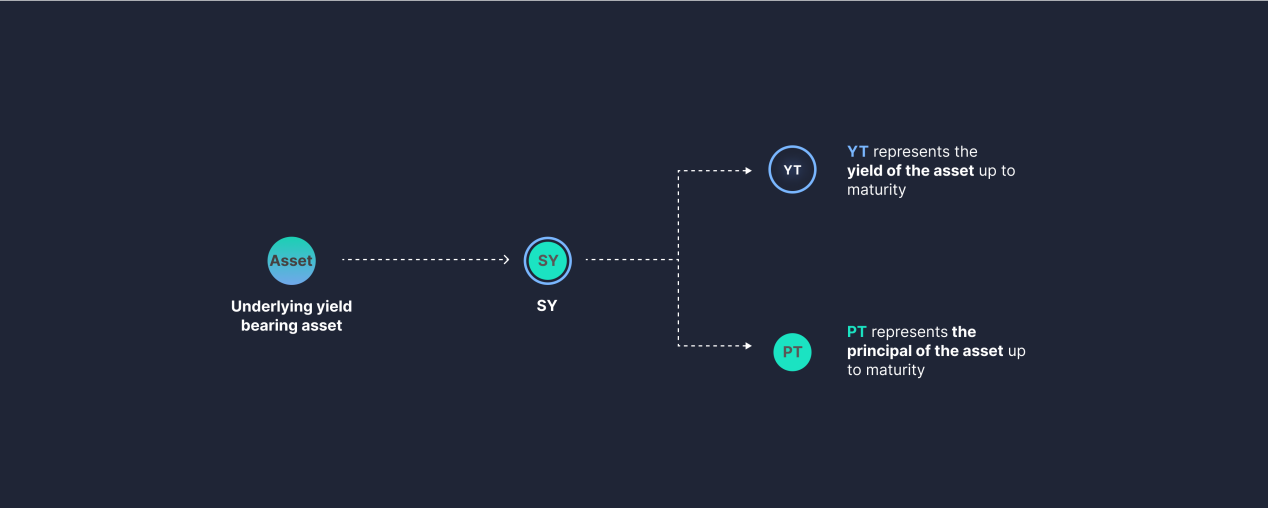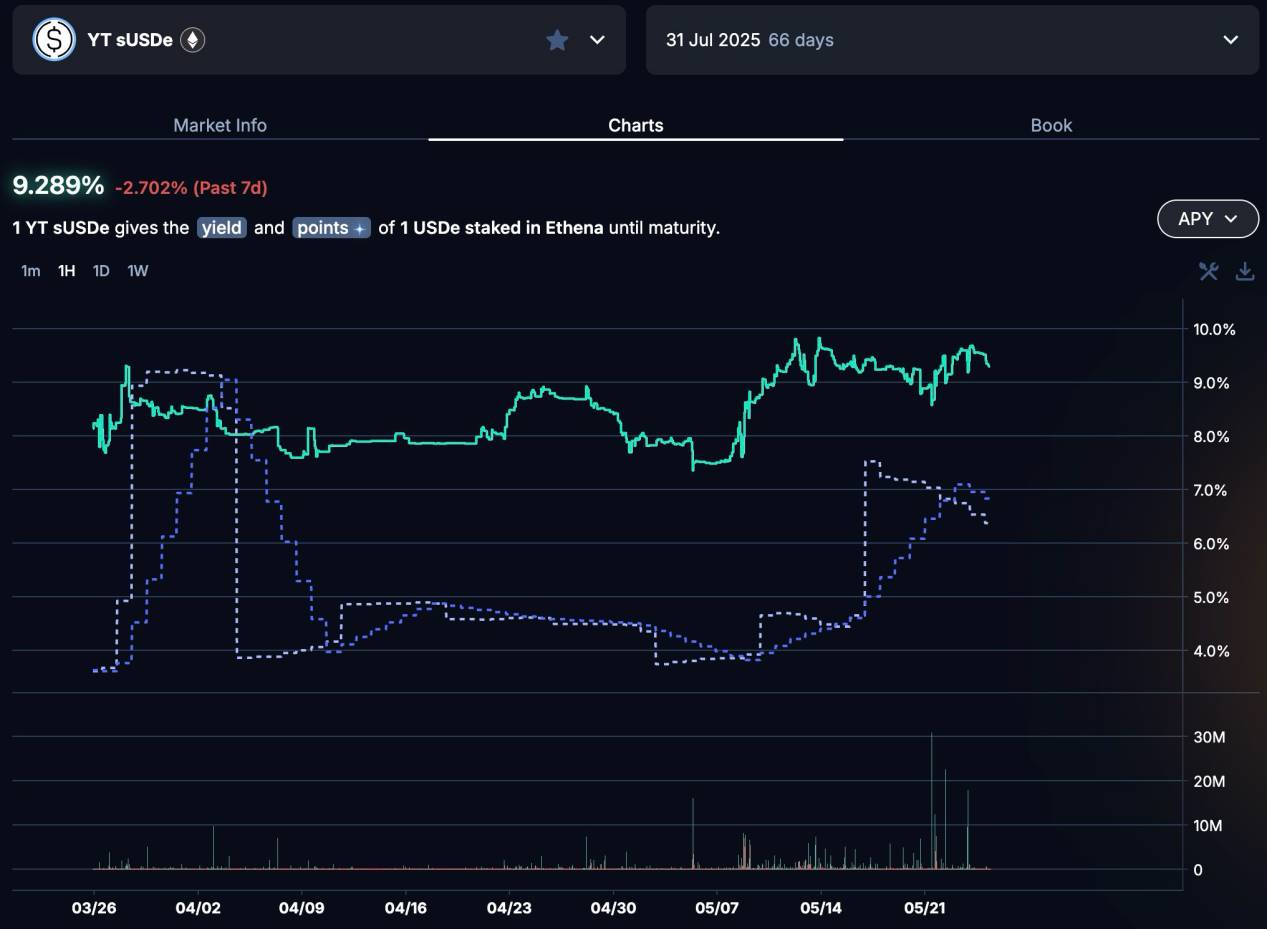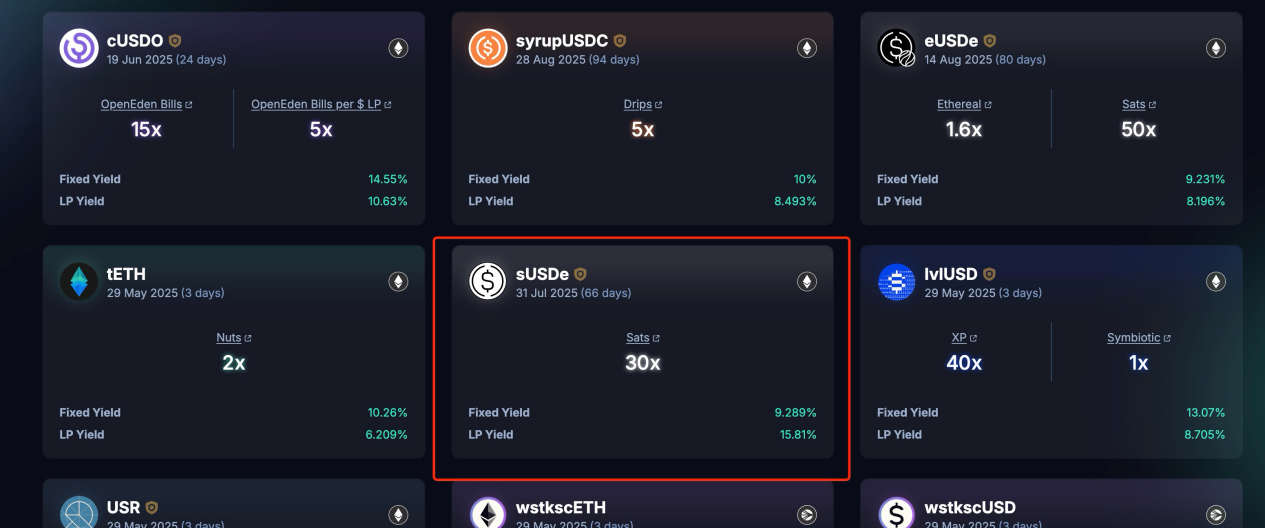Using sUSDe as an example, this article introduces how to measure the returns and risks of the YT leverage point strategy.
Author: @Web3Mario
Abstract: In the previous article, we discussed the rate risk of the leveraged yield strategy using AAVE's Pendle PT, and we received a lot of positive feedback from everyone. Thank you all for your support. Recently, I have been researching market opportunities within the Pendle ecosystem, so this week I would like to continue sharing an observation regarding the Pendle ecosystem, specifically the real yield and risks of the YT leverage point strategy. Overall, using Ethena as an example, the current potential return rate of the Pendle YT leverage point strategy can reach 393%, but it is important to be aware of the investment risks involved.
Leveraging YT Assets for Potential Returns
First, let’s briefly introduce this yield strategy. In fact, at the beginning of 2024, as LRT projects represented by Eigenlayer began to choose the point mechanism to determine the distribution of subsequent airdrop rewards, this strategy gained market attention. Users can purchase Pendle YT to increase their capital leverage, obtain more points, and thus receive a larger share of rewards during the distribution.
The reason purchasing YT assets increases capital leverage lies in Pendle's mechanism. We know that Pendle transforms yield-bearing token receipts into Principal Tokens (PT) and Yield Tokens (YT) through synthetic assets. A yield-bearing token can be converted into one PT and one YT, where PT is a zero-coupon bond that can be exchanged 1:1 for the native asset upon maturity. Its fixed interest rate is determined by the discount ratio of PT relative to the native asset in the secondary market created by the current Pendle AMM, as well as the remaining duration. YT represents the ability to accumulate returns from a locked yield-bearing asset during its duration. Holding one YT is equivalent to owning the right to the returns of a native asset for a certain period in the future.

Since holding YT only grants the right to returns without the ability to redeem the principal (this part is carried by PT), the remaining value of YT will decrease as the maturity date approaches, eventually reaching zero at maturity. This does not mean a loss of value; rather, part of the value has been realized as rewards distributed to YT holders. In other words, after holding YT for a period, you will notice two phenomena:
- The value of the YT you hold is decreasing;
- You have a portion of claimable rewards appearing on the Pendle Dashboard page;


The capital leverage ability of YT arises from this. Since it only grants the right to returns, the price of YT is much lower than that of a yield-bearing asset. Therefore, purchasing YT means you can leverage a larger yield-bearing asset scale with a small amount of capital to capture returns. Taking the example of YT sUSDe on July 25, the market price of YT is 0.0161 USDe, which means that assuming your capital is 1 USDe and ignoring trading slippage, you can purchase 62 YTs. This means that over the next 66 days, you will gain the right to 62 USDe in returns, which is the essence of capital leverage.

Of course, since there is no ability to redeem the principal, this strategy can only be valid if future returns are at least higher than the principal invested in YT. Let’s do a simple calculation. As shown in the figure, the current official annual interest rate for sUSDe is about 7% (capital fee dividends). Assuming the fee level remains unchanged for a period, the interest rate for holding for 66 days is approximately 1.26%. However, the capital leverage from purchasing YT is only 62 times, which means that at maturity, you can only obtain about 78% returns (62 * 1.26%), essentially indicating that investing in YT yields no extra returns and may even incur some losses. From the chart, we can see that the recent implied interest rates and actual interest rates are converging, but for most of the previous time, the interest rate spread was still significant, indicating that during that period, the price of YT might have been lower, putting the strategy in a loss state. This is also the reason why I did not choose to focus on this strategy a year ago.
However, this is not the case, as we overlooked another source of returns in the above rough calculation, which is the Point. In fact, this is the core purpose and source of excess returns for YT holders purchasing YT.
How to Quantify Expected Returns from Points
On the Pendle Point Market page, we can see that holding YT can earn some project point rewards. Taking sUSDe YT as an example, holding 1 YT can earn 30 Sats points issued by Ethena daily. So how to effectively quantify the expected returns from Points will determine the profitability of this strategy.

To understand how to correctly calculate the potential point yield, it is crucial to clarify the point distribution mechanism of each project. Again, using Ethena as an example, as of now, Ethena has conducted three rounds of point activities and has launched the fourth season of point incentives on March 25, 2025, lasting for six months, with a total ENA reward distribution of no less than 3.5%. Ethena has designed different Sats point incentive speeds for many USDe use cases, with the specific mechanism distributing points daily based on the fiat currency amount of the participating scenario, multiplied by different "factors."
To calculate the potential yield from investing in YT to earn points, we need to consider the following key parameters: the current total daily point generation, the points already distributed, the expected airdrop ratio at the end of the season, and the price of ENA at distribution. Let’s do a trial calculation:
First, we can use Ethena's official API to obtain the total number of points distributed in the current season, https://app.ethena.fi/api/airdrop/stats. As of now, a total of 10.1159 T Sats points have been distributed over a period of two months.
Next, we can record the changes in the total points every 24 hours and estimate how many points may be generated in the remaining time if the point release rate remains the same. Here, we assume that the current point release rate remains unchanged, which means an average daily increase of 168.6 B points.
Based on your position, calculate the total points that may be generated in the remaining time. Assuming we hold YTsUSDe assets worth $10,000, it means we can earn 10000 * 62 * 30, approximately 18.6M points daily.
Combining the current ENA price of $0.359 and estimating that the total ENA reward at the end of the season will be 3.5%, we can perform the following calculation:

In other words, assuming you purchase YT now to participate in the point competition, if all conditions remain unchanged in the future, you will receive an additional 415.8% APY return from the airdrop rewards corresponding to the points, totaling $13,861 in ENA rewards. Considering the -22% loss in sUSDe fee dividends, the total APY can reach 393%. Of course, by staking ENA, you can boost this yield by 20% to 100%, but we will not elaborate on this here. Interested friends can discuss it with me.
How to Reduce the Risk of Yield Fluctuation
Next, let’s briefly analyze the risks of this strategy. As mentioned above, the parameters affecting the yield mainly include five: the dividend yield of sUSDe, the price of YT sUSDe, the price of ENA, the total reward ratio expected to be distributed by the project party in this season, and the daily increase in points. We can express the impact of each parameter on the total annualized yield using the following formula:

So how can we reduce the yield fluctuation risk of this strategy? We can roughly have three hedging strategies:
When the ENA price is high, shorting ENA to lock in the expected ENA price at the time of reward distribution, avoiding the risk of ENA price fluctuations. Of course, we need to consider the margin for shorting ENA and its impact on the principal, which may affect the yield.
In some third-party Point OTC exchanges, such as whales market, when the Point acceptance price is high, cashing out part of the point airdrop value in advance.
For the sUSDe fee dividend yield, we can only partially hedge by shorting major assets like BTC and ETH, as we know that the capital fee rate of sUSDe is usually higher during bull markets, since bullish investors are willing to pay higher capital fees. However, as market sentiment reverses, we can currently only hedge the risk of fee decline by shorting major assets. However, Pendle's Boros product function allows users to hedge fee risks, so this channel is also worth paying attention to.
Conclusion
This article mainly uses sUSDe as an example to introduce how to measure the returns and risks of the YT leverage point strategy. For other targets, friends can research based on this methodology, and I welcome everyone to discuss with me.
免责声明:本文章仅代表作者个人观点,不代表本平台的立场和观点。本文章仅供信息分享,不构成对任何人的任何投资建议。用户与作者之间的任何争议,与本平台无关。如网页中刊载的文章或图片涉及侵权,请提供相关的权利证明和身份证明发送邮件到support@aicoin.com,本平台相关工作人员将会进行核查。




